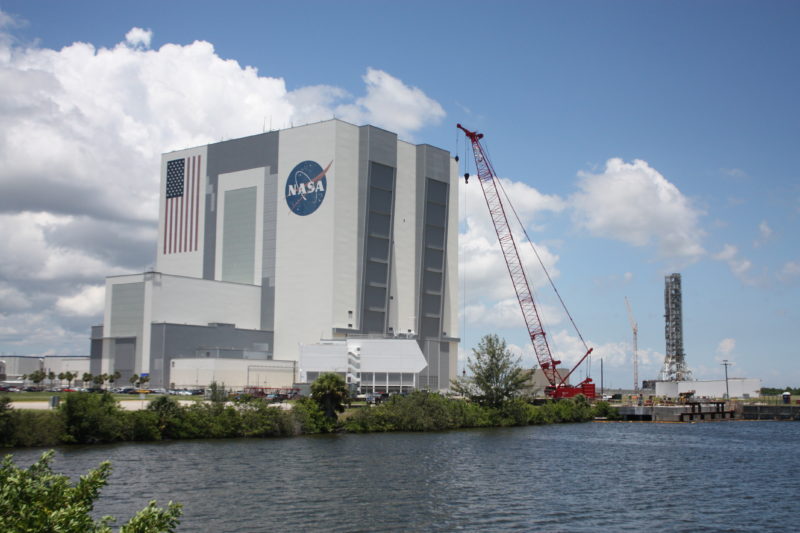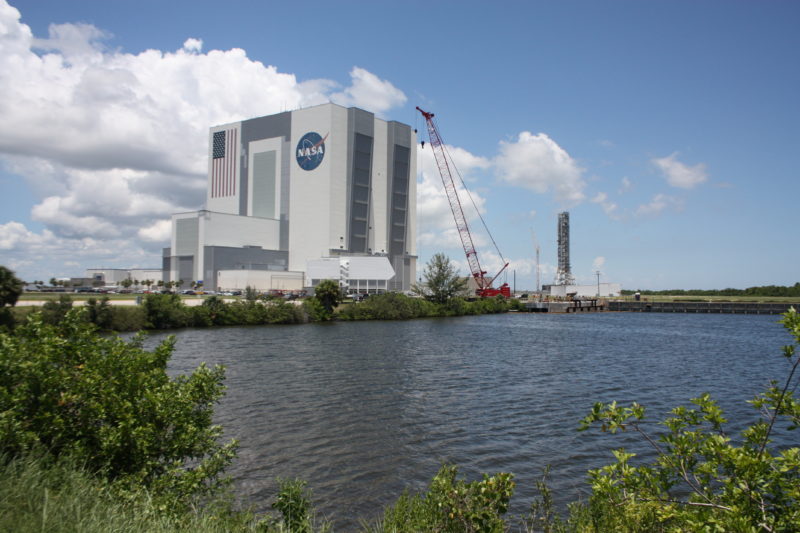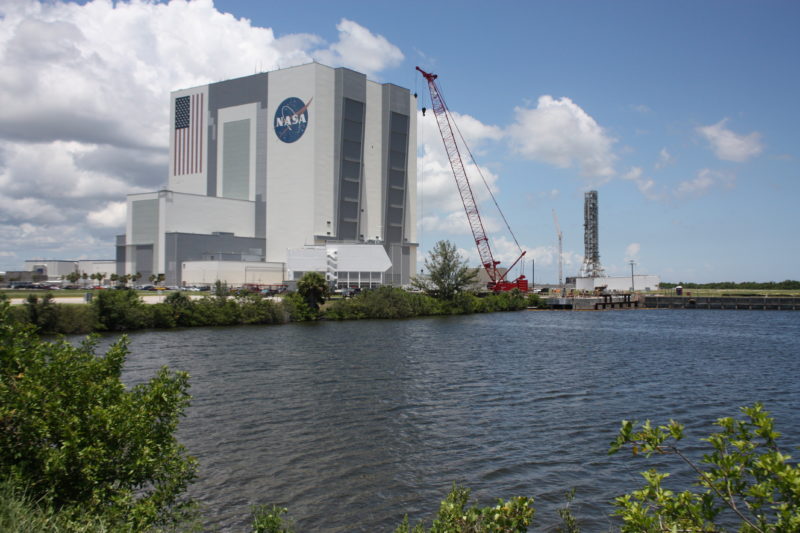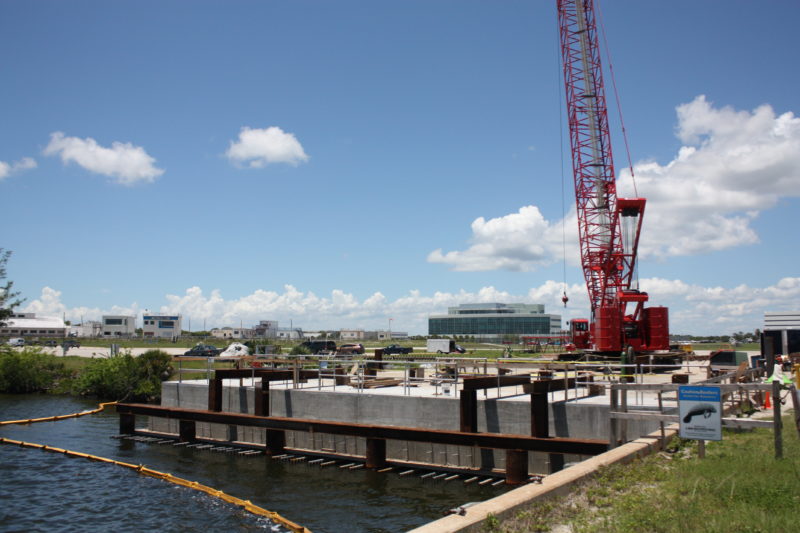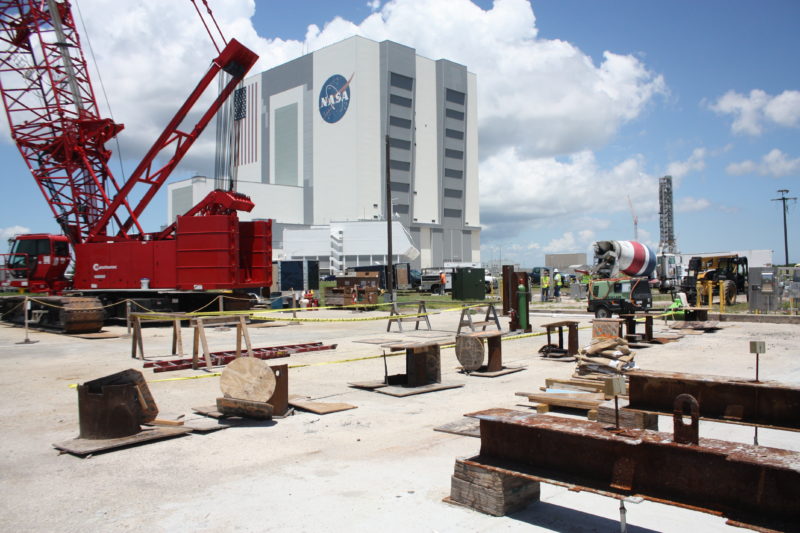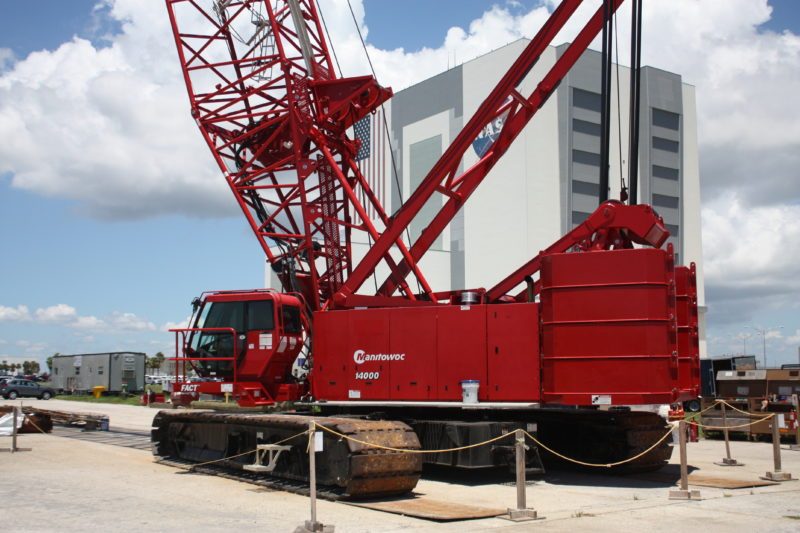August 4, 2017
Turn Base Construction
By Linda Herridge
Modifications are underway at the Launch Complex 39 turn basin wharf at NASA’s Kennedy Space Center in Florida to prepare for the arrival of the agency’s massive Space Launch System (SLS) core booster from the Michoud Assembly Facility
Located just across the street from the iconic Vehicle Assembly Building (VAB), the dock area that was used for arrival and offload of space shuttle external tanks is getting a makeover to accommodate the 300,000-pound core booster when it arrives aboard the modified Pegasus barge. The core stage is 59 feet longer and more than 500,000 pounds heavier than the external tank.
“The turn basin is undergoing significant structural modifications and electrical upgrades,” said James Rogers, a project manager with the Ground Systems Development and Operations (GSDO) Program. “The new wharf docking structure will be able to accommodate the load of the SLS core stage and enhanced barge.”
Rogers said a lot of analysis was performed on how the Pegasus barge was going to be moored at the wharf. The barge’s length was increased to 310-feet-long by 50-feet-wide to meet barge-to-dock interface requirements for the 200-foot-tall core stage.
The electrical system also is undergoing upgrades to meet new power requirements necessary to support Pegasus barge offloading operations. The new electrical system includes power receptacles for the SLS mobile transporter, which will carry the core stage to the VAB for processing and stacking.
Demolition and new construction began in December 2016 and is scheduled to be completed in August 2017. Southeast Cherokee is managing the engineering and construction associated with the project for GSDO.
The work includes driving multiple precast concrete poles to a depth of about 70 feet around the wharf. A crawler crane is used to lift and set each pile in place. When they are at a specified location, a pile-driving rig is used to “hammer” the pile through soil and bedrock below the water. Concrete also is being added to strengthen the wharf.
The rig is a mechanical device consisting of a heavy weight placed between guides so that it is able to freely slide up and down in a single line. The weight is raised to a specified level and then released, driving each pile deep into the ground.
“Ultimately, the wharf soon will be ready to receive the core stage, as well as other future flight hardware,” Rogers said.
NASA is preparing for the first integrated mission of the Orion spacecraft with the SLS rocket in 2019. During the uncrewed flight test, known as Exploration Mission-1, Orion will travel tens of thousands of miles beyond the moon and return home with a splashdown in the Pacific Ocean.

